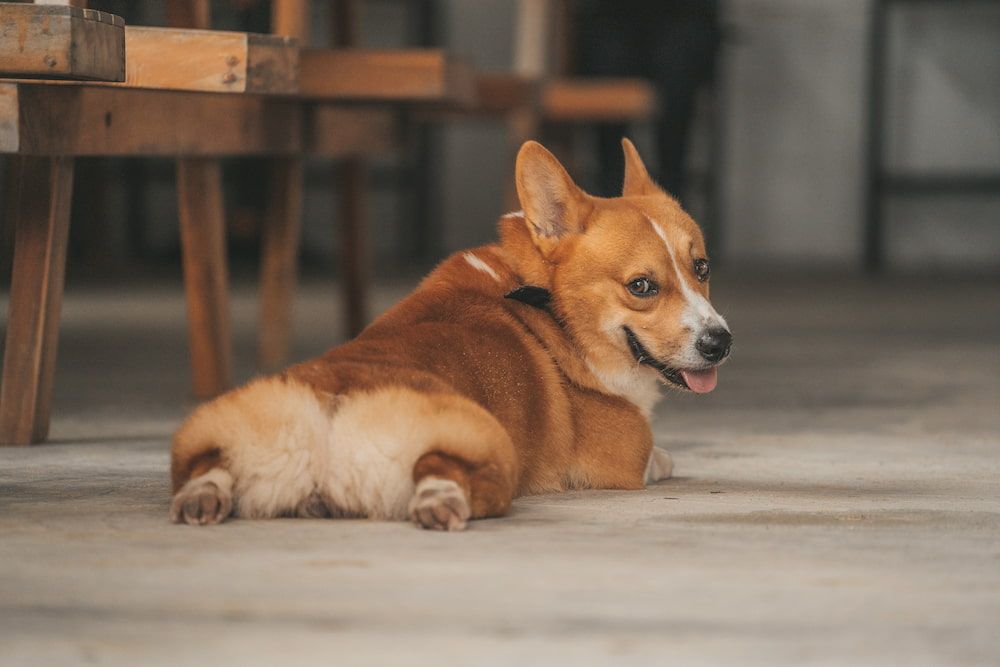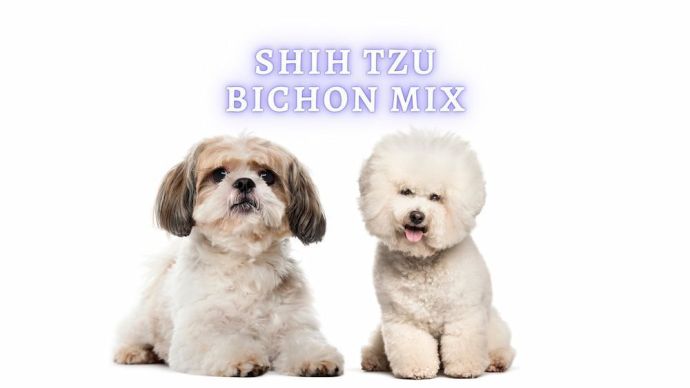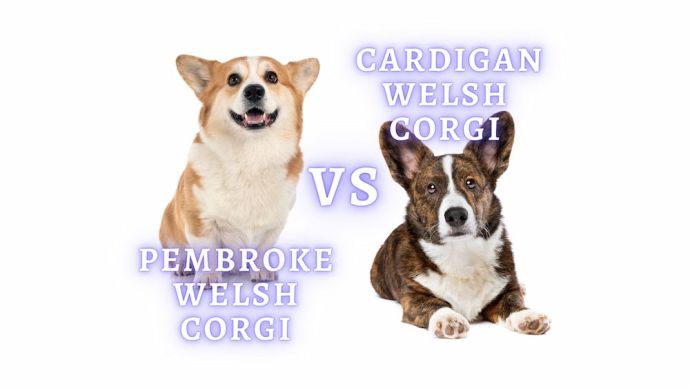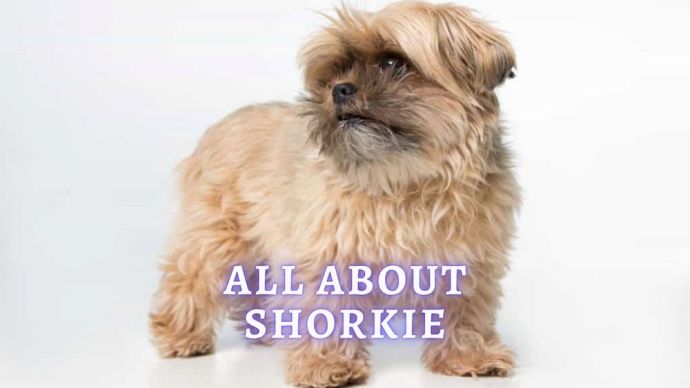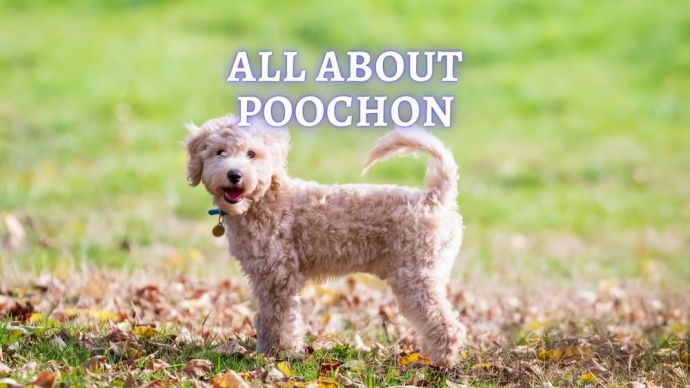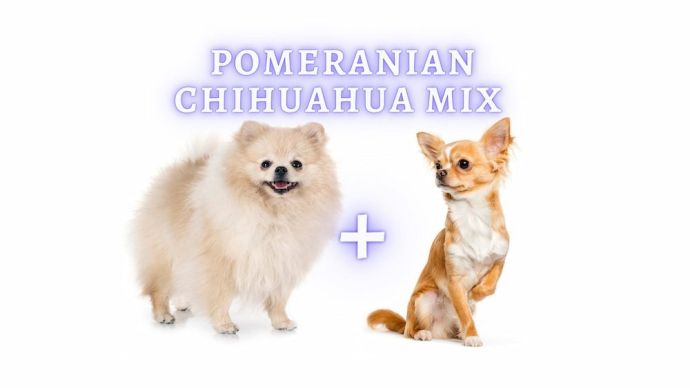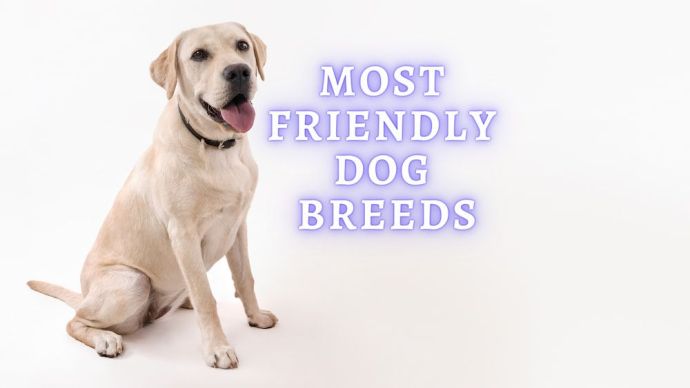Pembroke Welsh Corgi Dog Breed Information
Written by:
Author: Carol Young
Carol has worked in specialty, emergency, mixed animal and general veterinary practices, and enjoys all aspects of veterinary medicine. Her special areas of interest include anesthesia, critical care, emergency, dentistry, internal medicine and small animal nutrition.
View all 62 articlesLearn about our editorial process and veterinary review board.
Viewed: 48
Updated on: 07/08/2023
The Pembroke Welsh Corgi is a spunky herding breed well-known for its athleticism, strength, and endurance, as well as for its affectionate and energetic nature. A popular companion for Queen Elizabeth II, the Pembroke Welsh Corgi is a lot of dog in a small package, and packs loads of intelligence, energy, love, fearlessness, and independence.
Originally bred to herd cattle, the Pembroke Welsh Corgi has become a popular medium-size dog for dog lovers all over the world. If you’re wondering about adding a Pembroke Corgi to your family or home, there are a few things you may want to know in advance.
Breed History
The Pembroke Welsh corgi originated from, you guessed it, the Pembroke region of Wales in the United Kingdom. The Pembroke is not to be confused with the Cardigan Welsh corgi, which appeared a bit later. Both breeds share a lot of traits such as short legs, erect ears, and spunky nature. However, the Cardigan has a tail and more rounded ears, and the Pembroke tail is docked in many countries including the U.S.
The word corgi is thought to have come from the Celtic words cor for “dwarf” and gi for “dog,” and the breed is said to be descended from Swedish Valhunds first brought to Wales by the Vikings, and others claim the Pembroke came from dogs brought by Flemish weavers.
Although the Pembroke Welsh Corgi does not have a definite breed history, its origins are rooted in Welsh fairy folklore. A common tale states that the fairies felt sad for how hard humans worked taking care of their cattle, so thinking they could use some help, the fairies placed two Corgi puppies in the forest where two children soon found them while they were out herding cattle. The children took the two pups home and soon found out that the pups made wonderful herding dogs and affectionate companions.
According to legend, these two pups were the first breeding pair of Pembroke Welsh Corgis. Another Welsh legend also says that the fairies would use these sturdy little dogs to pull their carriages and ride them as mounts into battle. It is said that the markings of the fairy saddle are seen on the Pembrokes’ shoulders.
Fun Facts About the Breed
- In earlier days, the Pembroke and Cardigan Welsh Corgis were shown as the same breed, even though they came from different breeding stock.
- Corgis were bred to drive cattle, herd horses, ponies, and flocks of poultry, and guard the farm and family.
- The short legs and athleticism of the Pembroke Corgi allow it to duck beneath the kicking hooves of cows.
- The first corgis came to the U.S. in the early 1930s.
- The American Kennel Club (AKC) first recognized the Pembroke Welsh Corgi in 1934.
- By the 1960s, the Pembroke was one of the most popular dogs around the world, especially in Britain. Its popularity has since waned somewhat, but it still has many followers.
- Pembroke Welsh Corgis are famous for “splooting.” Splooting is when an animal lays on its stomach with one or both hind legs stretched straight behind. Splooting is also known as “frog legs,” “frog doggin'” and “dog froggin.'”
Appearance
The Pembroke Welsh Corgi is considered to be a dwarf dog because of its short stature, but at the same time, it’s also considered a medium-sized dog. The veterinary world defines the Pembroke as a chondrodysplastic dog, which means it has slightly bowed limbs and a long back. An interesting note is that Pembroke’s back is no longer than any other dog breed, but the short legs make its back look long,
Males tend to weigh up to 28 pounds, and females up to 26 pounds. Males tend to be a bit taller, standing 10 inches at the withers, and females 10 inches at the withers.
Pembroke Corgis tend to have docked tails in the U.S., however, tail docking is prohibited in several countries such as New Zealand and the United Kingdom.
The Pembroke is low to the ground and reaches full size at about 12 months of age. Their skull is wide and flat between the ears, the nose is black and long, and the eyes are oval-shaped and often brown. The fox-like ears of the Pembroke are perhaps the most endearing, medium-sized, and tapering to a rounded point at the ends.
Pembroke Corgis have a sturdy build with a level topline and muscular legs that can move fast and furious when they’re herding cattle or just running around at the dog park. They are known for their agility and maneuverability, and Pembroke’s often compete in agility events.
Corgis have a double hair coat which is short and comes in a variety of colors ranging from fawn or red, red to black and sable with white markings on the head, chest, back, paws, or legs. Black-colored Pembroke Corgis usually have white and tan markings that make them tri-colored, and their heads are often red or red and black.
Although many countries around the world have prohibited tail-docking, it has been part of the breed standard in the U.S. However, the dew claws are commonly removed shortly after birth.
Perhaps one of the most notable features of the Pembroke Welsh Corgi is their feathers located on the back legs just above the hocks, giving their rear ends an adorable fluffy look.
Personality and Temperament
Pembroke Welsh corgis are well-known for their sharp intelligence, determination, and independent nature. They are very active pups and love to be in the middle of the action. One of the most endearing things about Pembrokes is that although they’re small, they think they’re just as big as a Great Dane.
Bred to herd large livestock, they possess immense bursts of speed and can give a quick nip and then quickly retreat without getting underfoot. Corgis also tend to have a strong prey instinct and will hunt vermin, or other smaller pets such as cats if given the opportunity. As a result, Corgis need plenty of training using positive reinforcement to make the most of their talents.
If you’re looking for a quiet dog, the Pembroke Corgi is not necessarily a good choice. They are prone to alarm barking and will dig or chew things if left alone too much or not exercised regularly. Pembrokes want to be part of the family and don’t do well when left alone.
Most corgis make wonderful family pets and get along fine with other animals and children if they have been raised with them and receive adequate training. However, their herding instincts will emerge, and they can sometimes chase and nip at the heels of small children if they are running.
You won’t find a more loving and affectionate partner than the Pembroke Welsh Corgi. They are chock full of love and are always willing to please. At the same time, they can be wary of strangers, so it’s important to properly socialize them when they’re young. On the whole, Pembrokes are outgoing and friendly and do best with human owners who are loving but firm and offer calm leadership and communication.
Activity Levels and Exercise
Pembroke Welsh Corgis are not couch potatoes, so if you’re looking for a lounging breed, the corgi may not be the best choice. Because of their herding roots, they are extremely active and need daily exercise and recreation. Long walks, hikes in the mountains, or a trip to the dog park will allow these little dynamos to get their “wiggles” out and burn off some steam.
You might think that the short-legged corgi isn’t very fast, but what it lacks in speed, it makes up in stamina and endurance. The Pembroke Welsh Corgi was bred to walk or trot for many miles and is always up for dealing with stray cattle. As a result, it’s recommended to exercise your corgi at least for an hour per day.
The Pembroke Corgi may not be a great running partner, but if you like a slow jog or a brisk walk, the corgi makes a great exercise partner. If you want to mix things up, you can consider other activities such as fetch, flyball, or getting your corgi to work on its herding instincts and work with large inflatable exercise balls.
Whatever your lifestyle, daily and consistent exercise is key for corgis, as well as providing adequate mental stimulation. Pembrokes are very intelligent, and as a herding breed, they also need daily mental stimulation with games, puzzles, or other brainy activities.
Although corgis are very active and full of energy, they are very food motivated and tend to become overweight if not fed a proper diet and exercise daily.
When considering exercise and your corgi, don’t forget that as a breed, corgis are prone to back problems. Because of their short but sturdy legs, their spinal columns have less support than a taller dog, and so a lot of jumping may put unnecessary stress on their vertebrae and spine.
Trainability
As with other herding breeds, the Pembroke Welsh Corgi is easily trainable given the right motivation and techniques. They are definitely up for a treat reward at any time and love to have the chance to interact with toys and jump at the opportunity to herd things.
Pembroke Welsh Corgis brains are always working, and as a result need to be kept busy with outings, training games, and puzzles. It’s important to keep them active both physically and mentally.
Training classes, dog sports, or other activities are great ways to keep corgis healthy, and youngsters can have fun in obedience classes, training classes, or getting together with other dogs.
Corgis are smart and eager to please, but they respond best to positive reinforcement when training. For example, training them to come to you off-leash is best accomplished with praise and lots of love, and maybe a treat or two. Corgis are very sensitive and don’t like to be reprimanded, so remember, positive reinforcement is key.
If you have questions about training, contact your local dog training facility, or your veterinarian or join a corgi club. The more you learn about proper training methods, the happier you and your corgi will be.
Children And Other Pets
The Pembroke Welsh Corgi is a great family dog and gets along with other household pets and livestock. However, it is inclined to herd and to nip at the heels of smaller humans or animals who don’t want to be herded. This can cause issues with very small children and toddlers who tend to be very active and run around a lot. Training your corgi to resist herding small children might be necessary for this situation.
As with any pet, it’s important to teach members of the household and children to respect their animals. This goes for dogs too. Teaching your corgi to respect other pets and children is important, and the way to do this is to set clear boundaries. For example, training your corgi not to chase the cat, and training your toddler not to pull your corgi’s ears is essential in establishing household peace and safety.
In closing, even the best dog shouldn’t be left alone with young children, and there should always be adult supervision when dogs and kids are together.
Health Problems
Pembroke Welsh Corgis are adorable, good-humored, and full of fun and energy, but like other breeds, they are prone to several health problems.
- Progressive retinal atrophy(PRA). PRA describes a group of degenerative diseases that affect the photoreceptor cells in the eye. These cells deteriorate over time and can lead to blindness later in life.
- Glaucoma. Glaucoma is a painful condition that can potentially cause blindness due to a build-up of pressure inside the eye, known as intraocular pressure, or IOP. The good news is that if caught early, glaucoma can be prevented or delayed.
- Degenerative myelopathy (DM). This is a genetic condition that causes spinal cord degeneration in older dogs, and although the disease is not painful, the dog becomes a paraplegic in later stages. Genetic testing for this health issue is available from several veterinary schools and institutions.
- Back disorders. Given their short legs, corgis are prone to back issues such as intervertebral disk disease (IVDD) and osteoarthritis of the vertebrae. The best way to avoid potential back issues is to keep your corgi at a healthy weight and provide plenty of exercise.
- Obesity. Adorable as they are, it seems that if a corgi even looks at food, it gains weight. So, it’s important not to overfeed and provide plenty of exercise.
To give your corgi a long happy and healthy life, regular veterinary visits, and offering proper nutrition and daily exercise are essential. With tender loving care, the average Pembroke Welsh Corgi can live up to 13 years old or more.
Diet and Nutrition
As mentioned above, Pembrokes tend to be overweight, so it’s important to feed them a balanced diet, with reduced calories if your dog starts to gain too much weight.
As with any dog, proper nutrition is a vital part of your dog’s health and wellness, and it’s important to feed your corgi a well-balanced diet that includes all of the necessary vitamins and minerals your canine companion needs. Most commercial dog foods are FDA certified, and if you feed a home-cooked diet, make sure that your corgi is getting the vitamins, protein, and fats that it needs.
There are a lot of commercial diets available on the market, and when selecting a good quality food, make sure that it is not only FDA-certified but also Association of American Food Control Officials (AAFCO) certified. The AAFCO is a non-profit organization that sets standards for both animal feeds and pet foods in the U.S.
Coat Care and Grooming
The Pembroke Welsh Corgi coat is typically short to medium in length, straight and waterproof with a thick undercoat. The hair ends to be a bit coarse, and they don’t shed as much as other breeds. Even so, corgis do have a double hair coat, so regular grooming is important, especially during shedding season.
Brushing at least once a week should be enough to remove dead hair, and keep your corgi’s hair coat sleek and healthy. Of course, if your corgi ikes to dig and roll in smelly things, then regular bathing might be in order. If you bathe your pup yourself, make sure you use a pet-approved shampoo or one recommended by your veterinarian or groomer.
Keeping your corgi’s nails trimmed is also an important part of grooming, and you can do it yourself, or have your veterinarian or a groomer help you. There are many types of nail trimmers on the market, but veterinarians recommend dual-blade clippers as they give you better leverage for cutting corgi nails which can be thick.
Where to Adopt or Buy
If you’re looking to add a cute, loving bundle of corgi energy to your life, then you can try several options. You can go to a breeder but expect to pay up to $3000 or more for a purebred, and the cost may even be higher if the puppy comes from a champion show line.
If you would like to offer a warm home to a rescue Corgi, contact your local shelter or Corgi rescue groups: They may be able to find you your forever Corgi.
Before adopting or purchasing a Pembroke Welsh Corgi, make sure you do your research. For example, if purchasing from a breeder, ask for veterinary records and any genetic testing results of the parents to rule out any future health issues. If working with a rescue or shelter, makes sure they are reputable and respected by the veterinary and animal welfare community.
People also ask
Do Pembroke Welsh Corgis bark a lot?
The answer to this question is yes. Corgis can bark a lot, and this is because they are herding dogs and are had-wired to protect the flock and family and to alert that strangers are near. They can also bark when they want something, such as dinner or a walk. Pembroke Welsh Corgis are very vocal, so keep that in mind especially if you live in an apartment setting.
Can Corgis be left alone?
Corgis can be left alone for short periods, but honestly, they are social creatures and thrive when they are with their humans and even other animals. If you have to leave your corgi home alone for a few hours, make sure you offer a puzzle, or a toy to keep him busy and entertained while you’re gone.
What is the difference between a Corgi and a Pembroke Corgi?
There are two corgi breeds, the Pembroke Corgi and the Cardigan Corgi. They both originated in Wales as herding dogs and have the characteristic short legs and long backs. The biggest difference between the two are hair colors, ear shape, size, and in some instances, energy level and temperament.
The Pembroke typically comes in only three colors: Tricolor, red, and sable with white markings, while the Cardigan ranges in color from brindle, black, and white with tan or brindle patterns, to blue merle, or red and sable with white markings.
Cardigans also have more rounded ears, and tails and tend to be less energetic than Pembrokes.
Are Corgis high maintenance?
A characteristic of any herding breed is energy, and corgis have a lot. They are not high maintenance when it comes to grooming or feeding, but be prepared to offer your corgi lots of exercise and mental stimulation. Corgis need a job and can become destructive if left alone for too long or not exercised regularly.
READ MORE: Cardigan VS Pembroke Comparison
Last Words
The Pembroke Welsh Corgi dog is one of the most loving, affectionate, and fun-loving dog breeds, and can be a wonderful forever companion for any individual or family. They adore people and other pets, and can brighten up anyone’s day with their antics and love of play and adventure: Just remember that they are playfully energetic and can be a bit vocal.
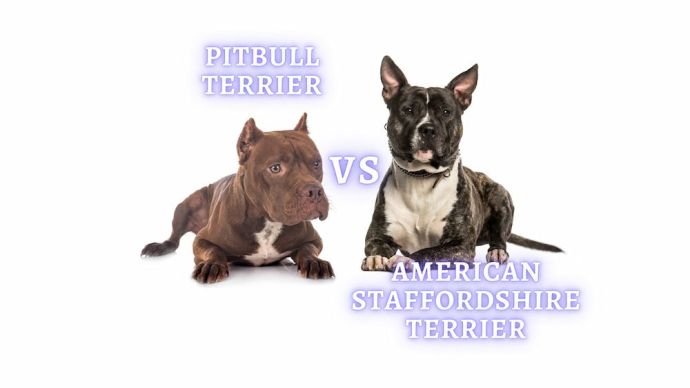 Dog Breeds American Staffordshire Terrier Vs Pitbull: Appearance, Activity Level and Temperament Difference
Dog Breeds American Staffordshire Terrier Vs Pitbull: Appearance, Activity Level and Temperament Difference - 194
- 0
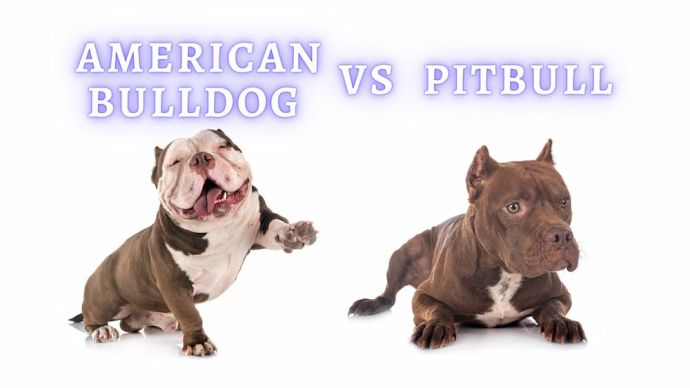 Dog Breeds American Bulldog vs Pitbull: American Bulldog and Pitbull Terrier Differences and Similarities
Dog Breeds American Bulldog vs Pitbull: American Bulldog and Pitbull Terrier Differences and Similarities - 741
- 0
 Dog Veterinary Tips Why is my Dog throwing up: Causes and Preventing (Veterinary Advice)
Dog Veterinary Tips Why is my Dog throwing up: Causes and Preventing (Veterinary Advice) - 21360
- 5
 Dog Care My Dog Keeps Scratching His Mouth: Reasons Why Your Dog Scratching Face
Dog Care My Dog Keeps Scratching His Mouth: Reasons Why Your Dog Scratching Face - 16559
- 1











